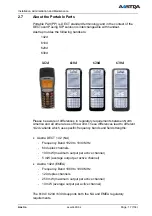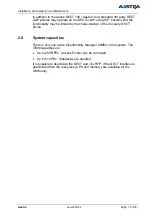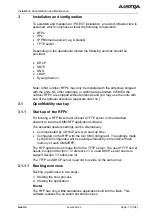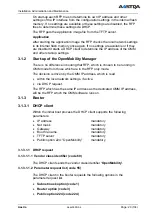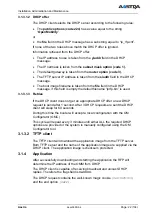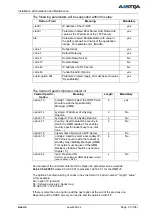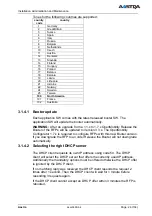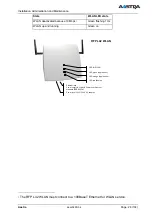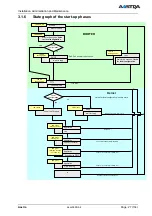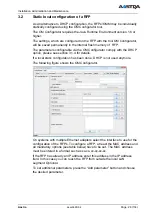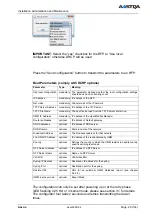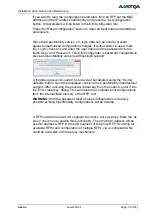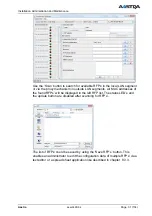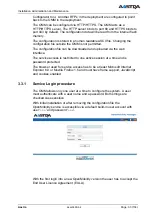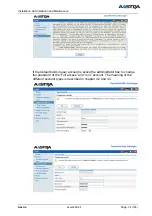
Installation, Administration and Maintenance
Aastra
depl-0900/0.4
Page: 19 (104)
3
Installation and configuration
To establish and maintain an IP DECT installation, a network infrastructure is
assumed, which comprises at least the following components:
•
RFPs’
•
PPs’
•
IP PBX/media server (e.g. Asterisk)
•
TFTP
server
Depending on the operational modes the following services should be
provided:
•
DHCP
•
SNTP
•
DNS
•
LDAP
•
Syslog
daemon
Note: In NA outdoor RFP’s may only be installed with the antennas’ shipped
with the units. No other antennas’ or cabling are permitted. In EMEA the
outdoor RFPs’ are shipped without antennas and you may use the units with
one of the optional antennas’ (separate order no.).
3.1 OpenMobility
start-up
3.1.1
Start-up of the RFPs’
For booting a RFP there must at least a TFTP server on the attached
network to load the OMM/RFP application software.
The essential network settings can be alternatively
•
Communicated by a DHCP server at start-up time.
•
Configured on the RFP with the tool OM Configurator. The settings made
by the OM Configurator will be saved permanently in the internal flash
memory of each OMM/RFP.
The RFP gets the boot image file from a TFTP server. The used TFTP server
needs to support Section 1.3 reference /1/. A used DHCP server needs to
support Section 1.3 reference /4/.
The TFTP and DHCP server need not to reside on the same host.
3.1.1.1 Booting
overview
Booting is performed in two steps:
1. Starting the boot process.
2. Starting the application.
Booter
The RFP has only a little standalone application built into the flash. This
software realizes the so called net boot process.













